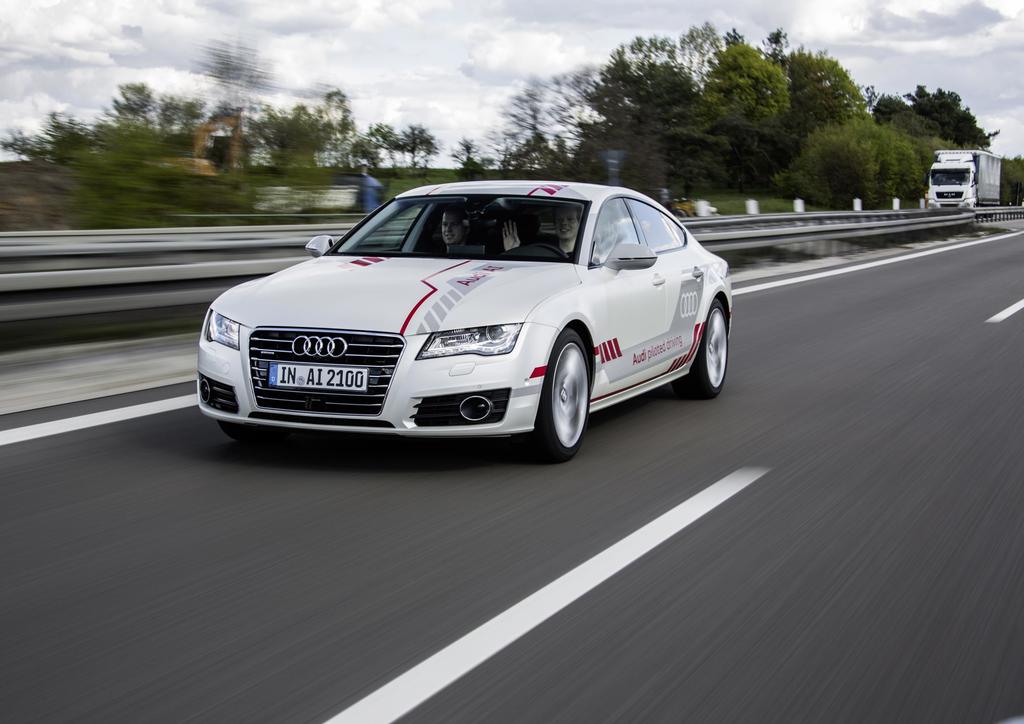Audi became the first automaker to showcase an automated vehicle in New York during an event near the state’s capital in Albany earlier today. The company demonstrated what they call Audi Highway Pilot technology, a Level 3 designation with regard to autonomous driving from the Society of Automotive Engineers (SAE). Those in attendance, including legislators, media, stakeholders, and their respective staffs received rides and in-depth demonstrations on the technology.
Currently, no vehicle on the road today surpasses Level 2 automation. Level 3, known as Conditional Automation, is a another step forward for proponents of automated driving.
“Audi, with the partnership of forward-thinking states like New York, are at the forefront of defining the future of transportation,” said Scott Keogh, President of Audi of America.
Sensor Fusion
Audi Highway Pilot technology is capable of sending a given vehicle to highway speeds when conditions allow. The system meets rigorous safety standards with its advanced sensors, cameras, lasers, and artificial intelligence. This “sensor fusion” approach allows the vehicle to control the acceleration, braking, and steering, while responding to road inputs without driver intervention. During the demonstrations, two Audi engineers were in the vehicle to monitor the system, ensure safety, and answer questions. The vehicle Audi used for the event has already recorded thousands of miles on limited access roads and highways across the United States.

New Legislation
New York recently approved Audi to conduct autonomous testing within the state. Audi is the first automaker to receive approval since Governor Andrew Cuomo announced the state was accepting applications from companies interested in testing their autonomous vehicles on public roads. Furthermore, new legislation included in New York’s fiscal year 2018 budget accounts for testing driverless technology via a year-long pilot program. Proponents of automated driving point to a range of benefits: improved infrastructure, reduced emissions, and accident-free roads chief among them.
“That kind of innovation only happens with industry and government working hand-in-hand toward a shared goal of safer roads,” Keogh said.
Carl Anthony is Managing Editor of Automoblog and resides in Detroit, Michigan.
Levels of automated driving as defined by SAE:
Level 0 – No Automation: The full-time performance by the human driver of all aspects of the dynamic driving task, even when enhanced by warning or intervention systems.
Level 1 – Driver Assistance: The driving mode-specific execution by a driver assistance system of either steering or acceleration/deceleration using information about the driving environment and with the expectation that the human driver performs all remaining aspects of the dynamic driving task.
Level 2 – Partial Automation: The driving mode-specific execution by one or more driver assistance systems of both steering and acceleration/deceleration using information about the driving environment and with the expectation that the human driver performs all remaining aspects of the dynamic driving task.
Level 3 – Conditional Automation: The driving mode-specific performance by an Automated Driving System of all aspects of the dynamic driving task with the expectation that the human driver will respond appropriately to a request to intervene.
Level 4 – High Automation: The driving mode-specific performance by an Automated Driving System of all aspects of the dynamic driving task, even if a human driver does not respond appropriately to a request to intervene.
Level 5 – Full Automation: The full-time performance by an Automated Driving System of all aspects of the dynamic driving task under all roadway and environmental conditions that can be managed by a human driver.
Photo & Source: Audi of America, Inc, Society of Automotive Engineers.



